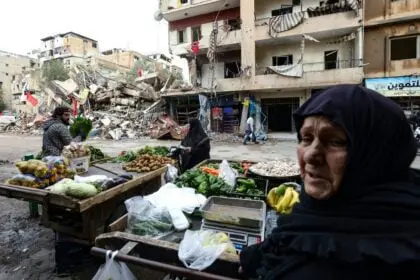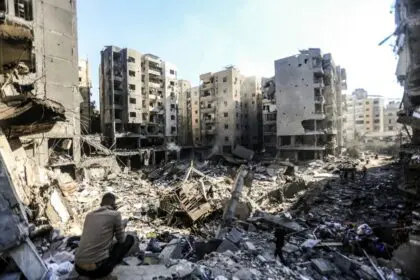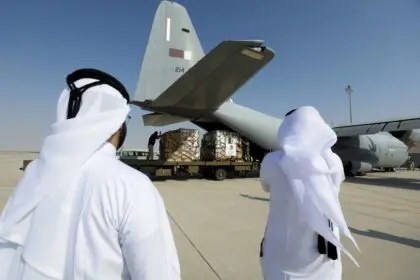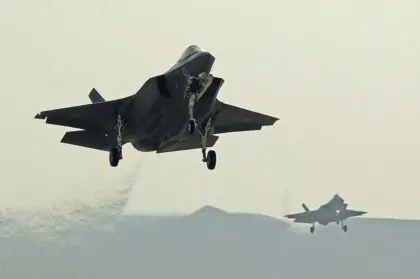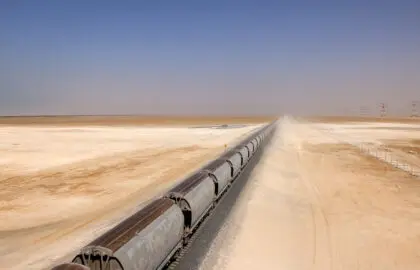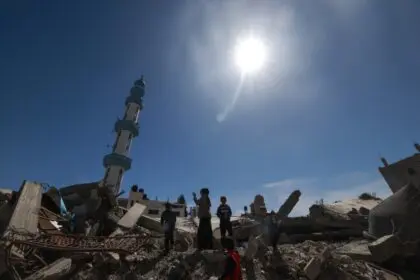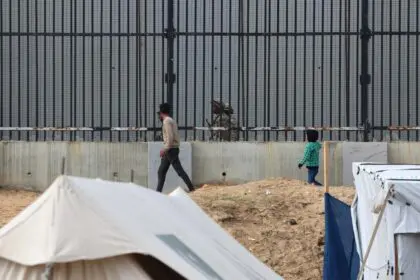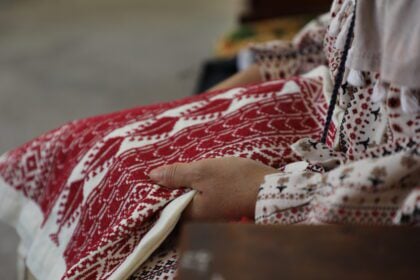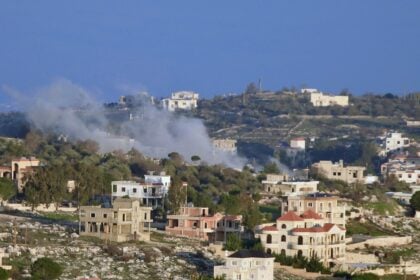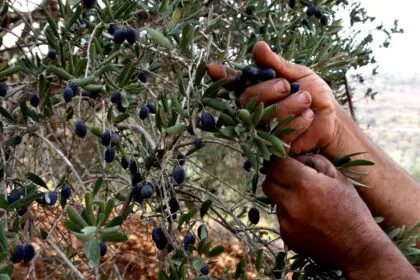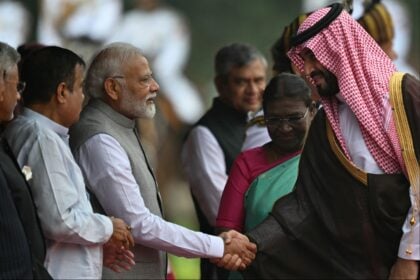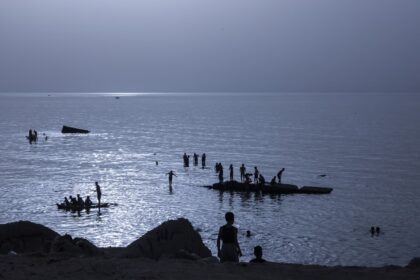
Introduction
Israel has a technologically advanced free market economy. Discarded diamonds, high-tech equipment, and pharmaceuticals are among their leading exports. Its main imports include crude oil, grain, raw materials, and military equipment. Israel usually has a large trade deficit, offset by tourism and exports of other services, as well as large inflows of foreign investment.
In conjunction with the rise in new cases of Coronavirus infection in the Middle East and the announcement that some 46,000 cases had been recorded, including 2800 deaths in March 2020, Israeli economic growth slowed compared to historical averages.
Between 2016 and 2019, growth averaged 3.6% per year, led by exports. Natural gas fields discovered off the coast of Israel since 2009 have positively affected Israel’s energy security outlook. Tamar and Leviathan fields were among the world’s largest marine natural gas discoveries during the years 2010-2020. In 2020, Israel began exporting gas to both Egypt and Jordan.
The Israeli Government has directed the incentives for rapid recovery from the coronavirus to operating companies, and companies the pandemic has played a significant role in halting operations, in return, stimulating technological investments in the private sector. While facing its challenges in creating jobs for young people, Israel has demonstrated that its investment climate can endure a year full of successive challenges.
It attracted $1.9 billion in new capital investment in 2020, ranking as the second-largest source of foreign direct investment in untapped or constituent areas in the Middle East, coming directly behind the Emirates. Israel deployed $2.7 billion in new capital investments beyond its borders in 2020, and the closures did not break its system of encouraging entrepreneurship in the region.
Despite this leadership, income inequality and rising housing and commodity prices continue to concern many Israelis. The rates of income inequality and poverty in Israel are among the highest in the OECD countries. There is a broad perception among Israelis that a small number of business leaders have cartel-like control over crucial parts of the economy. To address these public grievances, government officials have called for reforms to enhance housing supply and increase competition in the banking sector. Despite these calls, the restricted housing supply continues to affect young Israelis seeking to buy homes.
OECD considers that there is a need to intensify retraining and support the job search industry to help unemployed people find employment, especially for vulnerable groups; as well as containing the negative effects of COVID-19. In addition, ILO believes that enhancing existing on-the-job benefits would support the neediest Israeli families, reduce poverty, and improve employment incentives for low-skilled workers. Adult skills are relatively weak and widely diversified, contributing to a severe duplication of the labour market.
Improving quality and equity in Israeli education and training is essential to increase productivity and enhance opportunities in the labour market. Reducing the differences between educational fields as much as possible is vital for improving quality and further integrating the ultra-Orthodox (Harydim) and Israeli Arabs into the labour market. This will promote long-term growth, improve financial sustainability, and enhance social cohesion, reducing wide social and economic gaps.
Israel faces structural problems in the long run, including low labour participation rates for its rapidly growing social segments (Israeli hard-line and Arab societies). In addition, the progressive, globally competitive, and knowledge-based technology sector in Israel employs only about 8% of the workforce. At the same time, the rest primarily work in manufacturing and services, which are low-wage sectors.
In sum, expenditure on educational institutions in Israel remains low compared to most other OECD States with similar GDP per capita.
Gross Domestic Product
In the first nine months of 2021, the Israeli economy registered a 3% contraction, after growth in the third quarter alone, the rate jumped to 3.8%, but this “astronomical” ratio, if you will, followed a similar contraction in the second quarter. While due to closure, unemployment is still high at 22.6%, with about 60% of the unemployed are on unpaid leave.
The per capita output in the first quarter of 2021 was $37,500, but by the end of the third quarter of the same year, it had fallen to $36,000, the same level as in 2016. However, the decline of the dollar against the shekel, by 5% since the beginning of 2021 and by 13% since the middle of 2016, seems to have made per capita output lower. In other words, in the middle of 2016, 36,000 dollars were equivalent to 138.6 thousand Israeli shekels, while 36,000 dollars at the new exchange rate, became equivalent to 120.3 thousand shekels.
According to World Bank data, this contraction extends Israel’s GDP decline of about 5.9% in 2020, compared to 2019, with a real contraction of 2.44%. Under pressure from the Corona pandemic. According to the Israeli Bureau of Statistics, the economic contraction estimated at 2.6% in 2020 was driven by a 9.5% decline in private consumption and a 4.8% decline in fixed-asset investment, offset by a 2.7% increase in public consumption expenditure.
According to the report, during the last quarter of 2020, GDP grew by 6.5% annually, compared to 42.3% growth in the third quarter of the same year.
The Israeli economy recorded a contraction of 31.1% in the second quarter of 2020 on an annual basis and 6.7% in its first quarter.
Growth during the fourth quarter of 2020 reflected a 17.7% increase in private consumer spending, a 65.6% increase in fixed-asset investment, and a 2.8% improvement in exports of goods and services.
The Israeli economy was severely affected in the first half of 2020 before seeing an improvement in the second half, with the easing of stone and closure restrictions, and the gradual opening of vital market facilities.
| Indicators | measuring unit | 2019 | 2020 | Change ± |
| GDP (at constant 2015) | Billion US$ | 345.435 | 337.006 | -8.429 |
| GDP growth (annual) | % | 3.45 | -2.44 | -5.89 |
| GDP per capita (constant 2015) | US$ | 38.153 | 36.564 | -1.589 |
| GDP (at current value) | Billion US$ | 394.652 | 401.954 | 7.302 |
Source: World Bank.
Foreign Trade
Israel’s trade balance deficit (the difference between exports and imports) rose 54.3% in the first five months of 2021, driven by a jump in imports. According to data from the Israel Bureau of Statistics, the commodity trade deficit registered 40.9 billion shekels ($12.58 billion) at the end of May 2021, out of 26.5 billion shekels ($8.15 billion) on an annual basis.
Imports from abroad rose 19% as of May 2021 on an annual basis, to 113.1 billion shekels ($34.8 billion), from 95 billion shekels ($29.23 billion) in the corresponding period of 2020.
Exports abroad increased 5.4% to 72.2 billion shekels ($22.2 billion) from 68.5 billion shekels ($21.07 billion) in the corresponding period of 2020.
Israeli foreign trade does not include the figures for exchanges with Palestine, the latter being imported from Israel at an annual average of $3.6 billion and exported to Israel at $900 million.
Data also revealed a significant growth in trade between Israel and the Arab states in the first seven months of 2021. Data prepared by the Israel Central Bureau of Statistics showed that the United Arab Emirates is at the top of the trade list with the Arab states.
According to Leonatan Gunen, an official at the Israeli Ministry of Foreign Affairs, the total trade growth rate reached 243% in the first seven months of 2021, compared to the same period in 2020.
The period between January and July 2021 witnessed a trade exchange with the Arab Emirates of $613.9 million, compared to $50.8 million in the same period from 2020. The Kingdom of Jordan ranked second, with a trading volume of $224.2 million, in 2021, compared to $136.2 million in the same period from 2020. Egypt came in third, with a trading volume of $122.4 million, in 2021, compared to $92 million in 2020.
The Kingdom of Morocco ranked fourth, with a trading volume of $20.8 million, in 2021, compared to $14.9 million, in 2020. Bahrain was ranked fifth, with a trading volume of $300,000 in 2021, while there was no trade with Israel in 2020.
Trade between Israel and the last year is skewed, with Israel’s total exports being about $2.181 billion in 2020, compared to $2.182 billion in 2019.
2020 was the second-best year in the history of Israeli arms exports (military industries). Despite the fallout from the Corona pandemic, Israeli military exports jumped to $8.3 billion, up 13.7% from 2019, while it peaked at $9.3 billion in 2017.
The chemical industry in Israel contributes about 40% of industrial exports, 30% of industrial revenues, 9% of industrial labour, and the Israeli pharmaceutical industry exports about $7 billion. The Covid-19 pandemic greatly affected Israel’s diamond industry in 2020, and according to government data, Israel’s net imports of rough diamonds were about $1.067 billion, and net exports were approximately $860 million, a decrease of about 40% from 2019.
Net imports of polished diamonds were about $1.534 billion, down about 37% from 2019, while net exports of polished diamonds were about $2.37 billion, down about 30.5% from 2019.
In the top importing countries from Israel in 2020, the US is 26%, China is 9%, the UK is 7% of total state and Hebrew exports. The United States was the leading supplier of the State of Israel in 2020 with 12%, China with 11%, Germany with 7.5%, Switzerland with 7%, and Turkey with 6%.
| Indicators | 2019 | 2020 | Change ± |
| Exports (billion dollars) | 115.57 | 113.87 | -1.70 |
| Imports (billion dollars) | 108.26 | 96.53 | -11.73 |
| Trade balance surplus (billion dollars) | 7.31 | 17.34 | 10.03 |
| Coverage ratio of merchandise exports to merchandise imports (%) | 106.75 | 117.96 | 11.21 |
Industry
The Israeli industrial sector is quite diverse in general if it includes high-tech products (like aviation, communications, design, computer-assisted manufacturing, medical electronics, and fiber optics), wood products, paper, potash, phosphates, food, beverages, tobacco, tobacco, cement, medicines, construction and metals, chemical products, plastics, diamond parts, and textiles.
Owing to Israel’s lack of natural resources and raw materials, Israel’s sole advantage is its highly skilled employment, scientific institutes, and research and development centres. Therefore, Israeli industries mainly focus on manufacturing high-value-added products developed by their own creative and innovative human resources.
Industrial production in Israel rose by 8.2% on an annual basis in August of 2021, after an increase of 5.7%, adjusted to the rise in July as industrial production advanced 4.3% (compared to 2.3% in July). On a seasonally adjusted monthly basis, industrial production fell by 1.9%, compared with an increase of 2.3% adjusted for the July increase.
According to a report by the Hebrew economic website Calcalist, issued in early June 2021, 2020 was the second-best year in the history of Israeli arms exports (military industries), as those exports jumped by about 14%, reaching the peak of $8.3 billion.
The report said: They contact us worldwide to buy missiles: Specifically, at a time of a global health crisis, Israeli military exports reached $8.3 billion, an increase of 13.7% compared to 2019. Military exports peaked in 2017 when they reached $9.3 billion.
According to UN data, the chemical industry contributes about 40% of industrial exports, 30% of industry revenues, and 9% of industrial employment. According to a Ministry of Economy and Industry report, the Israeli pharmaceutical industry exports about $7 billion and contributes to the employment of some 10000 workers in various occupations throughout Israel.
The Israeli Supertech industry was characterized by numerous departures in the second decade of the current millennium, with a total of 138 exit deals amounting to $21.7 billion in 2019, of which 122 were mergers and acquisitions, a leap from 2018 when 122 (106) were left.
The Covid-19 pandemic greatly negatively affected the diamond industry in Israel in 2020. According to government data, Israel’s net imports of rough diamonds were about $1.067 billion, and net exports were approximately $860 million, a decrease of about 40% from 2019.
Net imports of polished diamonds were about $1.534 billion, down about 37% from 2019, while net exports of polished diamonds were about $2.37 billion, down about 30.5% from 2019.
According to World Bank data, in 2018 and 2019, the industrial sector accounted for 17.29% and 17.23%, respectively, of the total number of workers in the workforce.
Agriculture
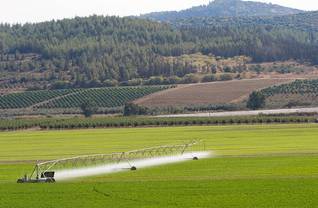
The agricultural sector in Israel is characterized by an intensive production system due to the need to compensate for the scarcity of natural resources, including water and especially arable land. The steady increase in agricultural production is due to the close cooperation between researchers, farmers, and agro-related industries. Together, they develop and apply new methods in all agricultural branches, the result is the growth of modern agriculture in a country with more than half of its area being desert land.
As Israeli farmers are forced to fight the difficult environment and limited water resources, their experience and expertise are consistent with the needs of developing countries. The country’s success is due to the design and innovation of farmers and scientists who have devoted themselves to the development of prosperous agriculture and have demonstrated that the real value of the land lies in the way of its exploitation.
Close cooperation between research, development, and industry has led to the development of commercial agriculture that exports agricultural technology, particularly water-related technologies, to all regions of the world.
Israeli agriculture is a success story that goes hand in hand with a long and bitter struggle against harsh conditions, the exploitation of farmland, and extremely scarce water supplies, including the waters of modern desert projects in which Israeli expertise has become a winning export card. When the Jews began resettling their homeland in the late 19th century, their first effort was to transform the arid land into fertile fields for much of its ideological reasons.
The secret to Israel’s current agricultural success lies in the close interaction between government-supported farmers and researchers who cooperate in the development and application of sophisticated methods in all agricultural branches, as well as technological advances, modern irrigation techniques, and innovative agricultural mechanization.
According to United Nations data, the agricultural sector in Israel contributed about 1.3% of the country’s total value added in 2020. The World Bank estimates the percentage of workers in the farming sector at 0.92% of the total number of employed people in 2019, down from 0.96% in 2018.
Israel is not self-sufficient in agriculture and is dependent on imports. Nor will this situation change in the coming years due to the lack of arable land and freshwater. In 2019, agricultural imports amounted to approximately $6.78 billion. While Israel is almost 100% self-sufficient in poultry meat production and the local supply of table eggs, the feed used to generate this sector comes from abroad. However, the country is experiencing a large trade deficit in food and agricultural products, importing large quantities of feed beans and large quantities of consumer-oriented agricultural products.
Israel’s agricultural exports were 2.280, 2.182, and 2.181 billion dollars in 2018, 2019, and 2020, respectively. Agricultural imports in 2018 and 2019, respectively, were $6.920 billion and $6.786 billion.
Agricultural exports for 2017 amounted to approximately $2.2 billion.
According to the Ministry of Agriculture and Village Development, the Israeli Agricultural Department is divided into two branches: the Farm Branch (about 60%) and the Livestock Branch (about 40%). The area under cultivation is about 4.1 million dunams. These areas provide most fresh agricultural products consumed locally from cultivars and livestock, including fruits, vegetables, eggs, birds, milk, and others.
Today, there are 919 agricultural towns in Israel, 443 of which make up 48% of all agricultural settlements, 266 kibbutzim, and 29% of all agricultural towns in the country. The Ministry of Agriculture and Village Development estimates 295,000 people live in these countries and 150,000 in the kibbutz.
With over 1,800 facilities, the Israeli food processing sector is an important player in the local economy. The Israeli food processing industry is innovative and constantly offering new products to the market. Multinational food manufacturers such as Nestlé, Unilever, Danone, and Pepsi collaborate with well-known Israeli food companies such as Osim and Strauss. According to the Israeli Central Bureau of Statistics, the local food processing industry is dominated by four groups: Tnuva, Osem-Nestlé, Unilever, and Strauss.
In 2019, Israeli food manufacturers had annual revenue of $18.6 billion, while the beverage and tobacco industry had a yearly revenue of $2.5 billion. The sector currently accounts for more than 17.5% of Israel’s total manufacturing revenues. With limited land and resources and a growing population, in 2020, Israel imported $2.91 billion of raw food products to the local food industry.
Sales of fast-moving Israeli consumer goods reached $13.3 billion in 2019, of which $9.6 billion were sales of food products. The retail food market consists of supermarket chains, as well as small urban stores, fuel stations, and nearby groceries and markets. Due to the Covid-19 pandemic and the restrictions on movement by the government, the sales in supermarket chains account for more than 65% of total retail sales of food in 2020.
Poverty
The Israeli government has set the poverty line at $1,040 per capita as an annual return.
The National Insurance Institute issues an annual report identifying poverty rates throughout the country. Ten years ago, it was found that Israel’s poverty rate exceeded 24 percent, thus falling behind OECD rates. This proportion is higher annually among religious people (Harydim), the poorest group in Israel, with a poverty rate ranging from 50% to 59%. This is evident in the city of Bnei Brak, where Orthodox Jews are based, while among non-religious Jews, this figure is as low as 12%, while poverty is struck by 37% of immigrants.
The Arab citizens of Israel, known as the “48 Arabs”, makeup 21% of the population and spread over 470,000 families. Their poverty rate has also increased to 50%. The people of East Jerusalem are among the poorest Palestinians among Arab towns and villages, with 8 out of 10 living below the poverty line.
According to Israeli economists, “racial discrimination in employment suffered by Arab workers is one of the reasons for the high poverty rates in the country. Religious Jews refuse to work for religious reasons. ” This brings the number of poor people in Israel to about 2 million. It is equivalent to 21% of the total population. The number of children living below the poverty line has risen to 850,000.
According to research sources, many factors have affected the deterioration within Israel, most notably: reducing child allocations, slowing economic growth, declining security, cultural marginalization, and internal problems in society that make it difficult for women to enter the labour market or make it difficult for families to reach jobs.
In some Israeli cities, entire neighbourhoods are living in extreme poverty. These slums exist in more than one region and city. Anyone who visits those areas and looks at their residents can witness first-hand the critical nature of the living conditions they are in.
A survey published in December 2020 revealed that more than a quarter of a million families in Israel had entered the poverty line since the beginning of the Covid-19 pandemic, an increase of nearly 50%. According to the non-profit organization Latte report, which conducted the survey, the proportion of Israeli households living in poverty rose from 20.1% to 29.3% in 2020. These ratios have revealed that an estimated 850,000 families in Israel lack basic education, health care, and food, with 268,000 families in poverty since the beginning of the epidemic in 2020.
Latte said that 143,000 new families were food insecure, while poor children missed classes and meals and were embarrassed to invite their friend’s home.
Latte found that of the food insecure families receiving food assistance before the pandemic, more than eight out of ten reported not having enough money to buy enough food. At the same time, one-third said their children either had to miss meals or only had smaller rations. These families spend an average of 7,550 shekels ($2,315) per month on all their needs, while their total income is 5,104 shekels ($1,565). More than half (55.6%) said that their debt had increased due to the crisis, compared to less than 30% of the general population.
About three-quarters (73.9%) of these families said that their children did not have enough computers to study online (compared to one-third of the population as a whole). Three out of ten reported that their children missed school classes because they had to work to help provide income for the family.
International Market Position
The Swiss Research Institute IMD ‘s Competitiveness Index showed the decline of the Israeli economy to one position in 2021 (compared to 26 in 2020) out of 64 countries.
However, an analysis by the Israeli Chamber of Commerce Association of IMD data showed that the strengths of the Israeli economy were reflected in its first-place export of Supertech services, with the same being true in 2020.
Israel also retains first place amongst countries in R & D investment as a percentage of GDP. It also ranks third in the section on public spending on education (as a percentage of GDP), with the same in 2020; In the cybersecurity index, Israel ranked second in 2021, one position higher than in 2020.
Regarding delays in doing business as a result of labour laws, Israel declined from 19th to 27th.
Conversely, Israel’s low ranking is reflected in the 52 ranking in the labour force participation rate, down 4 stages from last year, and the 56 ranking in renewable energy compared to 55 in 2020.
In the cost-of-living ranking, Israel ranks 54th, compared to 52nd in 2020. In commodity exports as a percentage of GDP, Israel ranked 60th in 2021 compared to 56 in 2020; Under fuel prices, Israel ranked 59th, unchanged from 2020.
Tourism
Tourism in Israel declined in 2020, except for the first quarter in which the impact of the Coronavirus was not yet apparent, by about 95%. However, hotel accommodation data in Israel showed a more positive picture, with the total number of hotels falling by only 64%.
The strength and flexibility of Israeli domestic tourism have helped hotels, especially in the distinct resort areas. According to the website Bespoke News, which specializes in tourism, there was a 50% decrease in the number of Israeli hotel dormitories, while foreign tourist dormitories fell by 95%.
According to the website, the Israeli tourism industry has no future without inbound tourism. International tourism comes in all months of the year and is spread to many areas, including important places such as Tel Aviv, Nazareth, and Haifa. “Cities like Tel Aviv, Herzliya, and Haifa will not live without international business tourism,” he said.
Infrastructure
The bulk of Israel’s industrial enterprises are concentrated in the country’s extended metropolitan agglomeration, stretching from Greater Tel Aviv to Haifa in the north and to Ashdod and Ashkelon in the south with satellite locations in Jerusalem and a number of smaller provincial cities.
This concentration of industrial locations is a mixed blessing. Most Israeli industries are located in dedicated industrial zones on the outskirts of cities, with generally easy access to the country’s road network. Location advantages are however increasingly jeopardized as a result of Israel’s seriously undeveloped transportation infrastructure. There is a huge discrepancy between vehicle density and actual road capacity, particularly at peak hours, causing huge traffic jams.
For decades Israel’s governments have neglected the country’s transportation infrastructure, remaining almost exclusively fixated on minimal motorcar mobility, resulting in a grave lack of multi-lane thoroughfares and adequate rail services.
When the wheels appeared to grind to a halt, the moment arrived to stir Israeli politicians and officials into action in the late 1990s. A number of cumbersome road bottlenecks were improved and a whole new toll-highway was constructed running from north to south (Road number 6). Israel had 18,470 kilometres of road in 2010 (World Bank). Substantial funds were being invested in upgrading Israel’s obsolete railway system, adding new lines and stations and preparing for large-scale electrification of the main routes.
Relief soon became apparent with an increase of rail passengers from 5 to 35 million in just fifteen years time. The total length of Israel’s railway increased from 676 kilometres in 2001 to 1,034 kilometres in 2011 (World Bank).
Israel has also managed to upgrade the country’s main national airport of Tel Aviv-Ben Gurion into a modern facility capable of handling the anticipated increase in freight and passengers. More than 5.3 million passengers were carried in 2011, compared to 3.9 million in 2001 (World Bank).
Despite these marked improvements, Israel is still lagging behind in comparison with advanced Western European countries. One particular bottleneck is the lack of adequate mass transit systems in the country’s biggest cities, such as free bus lanes, tramlines and underground railways. Ambitious plans for improvement have been prepared but are making slow progress.
The Israeli gross domestic product (GDP) in the year 2015 had reached 299.42 billion US dollars, in comparison with 308.77 and 293.31 billion dollars in the years 2014 and 2013 respectively. In the year 2015 the GDP per capita had reached 35770 dollars, in comparison with 35670 and 34430 in the years 2014 and 2013. The Israeli economy had witnessed in 2015 a grow with a rate of 2.5%, in comparison with 3.4% and 4.4% in the years 2014 and 2013. The World Bank predicts that the Israeli GDP will grow in 2019 by a rate of 3.3%.
In December 2016, officials from the Bank of Israel confirmed that the Israeli economy had achieved a grow with a rate of 3.5%, pointing that the growth rate will decrease slightly in the years 2017 and 2018 to reach 3.1% and 3.2% respectively. The inflation rate had reached 2.8% in 2015, in comparison with 1.1% and 2.1% in the years 2014 and 2013.
According to the International Competitiveness Report for the period stretching between 2016 and 2017, Israel had came in the 24th rank, in comparison with the 27th rank in the period stretching between the years 2015 and 2016. This goes back to its being one of the most able economies in terms of innovation in the world (second at the world level).
High-Tech

Today the division of high-tech industries, together with the branch of ICT services, has become the locomotive of Israel’s economy. In recent years, especially in the last decade, a number of highly dynamic innovative firms have been making headway.
These are companies in the spheres of electronics, telecom, computer engineering, fine chemicals and pharmaceuticals carrying famous brand names such as Eltek, Alvarion, Teva, Aladdin, Delta Galil, Gilat, Vishay, and Elisra, all of which are positioned in the first echelons of global competitiveness, earning high export revenues for Israel.
Israel’s military industries occupy a special place in this division. Over the decades arms manufacturers such as Rafa’el, IAI and Ta’as have hugely expanded in scale and levels of sophisticated armoury, upgrading from producing basic fire arms to complicated weapon systems with a high technological content.
Israel’s military industries – benefiting from huge public investments underpinned by decades of formidable financial transfers from the United States – were crucial in delivering vital so-called ‘spill-overs’ to the advanced modern industries of today, both in highly skilled professional manpower and in technological expertise.
High-tech exports accounted for 14 percent of manufactured exports in 2011, with a value of 8.8 billion USD. Export of ICT goods accounted for 10.7 percent of total goods exports (World Bank). Arms and security services account for roughly a quarter of Israel’s industrial exports and about 20 percent of industrial employment. In the last decades Israel’s arms exports have reportedly increased more than twentyfold, making the country the fifth largest arms exporter in the world. Another special branch worth mentioning is Israel’s diamond processing industry, good for yearly exports regularly exceeding 10 billion USD.
Whereas Israel’s high-tech firms are prominent eye catchers in the global economic arena, a considerable number of traditional Israeli firms which are active in for instance food processing, tool making or home applicant production, such as Osem (currently incorporated into Nestlé), Tnuva, Prigat and Elbit are holding ground on the Israeli consumer market.
Services

The services sector is Israel’s largest economic sector. It contributes 66.1 percent to the country’s GDP (CIA, 2012) and employs 77 percent of the labour force (World Bank). It is responsible for a third of Israeli exports, but consumes two-thirds of the country’s investments and public spending. The value of service exports in 2012 amounted to 110.9 billion NIS (31.2 billion USD), according to the Israeli Central Bureau of Statistics.
Even more so than the industrial sector, the services sector is a highly diversified conglomerate of smaller and larger private firms and of public institutions and enterprises, most of which are facilitating services. There are also enormous contrasts between high-end and low-end services, the former consisting, for instance, of business consultancies, real estate management and accountancy firms.
Because of its broad economic spectrum the whole sector is conventionally divided into sub-sectors, firstly public and private sector enterprises. The division of public services employs almost half of the sector’s total work force.
The biggest spenders among governmental institutions are those providing health care, education and welfare. Overall appreciation of Israel’s public health care and education is evident. But a growing number of Israeli political and economical analysts are pointing at a number of worrisome deficiencies, especially in the country’s educational system.
Deficiencies
Israel spends much less on secondary education compared to the budget for academic tuition, while standards of primary education are giving reason for rising concerns. Scores of Israeli pupils in standard global tests are disappointingly low and the number of secondary school drop-outs is alarming. Concerns have also been expressed about the lack of uniform educational standards. Public schools and some (but not all) schools operated by religious institutions are often badly equipped and performing below expectation.
Too many governmental bureaus and institutions are regularly featuring in Hebrew news reports with complaints about lengthy, time and money consuming procedures, questionable regulations and high levels of corruption. These are key factors which are measured and processed by world socio-economic research institutes such as the Global Competitiveness Index (GCI), disclosing vital insights into public service effectiveness of national economies.
According to this index Israel’s public sector is remarkably inefficient compared to advanced European states, such as Germany, Great Britain, the Netherlands and the Scandinavian countries.
Energy
All data mentioned here are from the US Energy Information Administration.
Israel’s energy sector is governed by the Ministry of National Infrastructures, which gives overall guidance to the sector and oversees the state-owned energy companies. The most important of these companies is the Israel Electric Corporation, which until recently had a monopoly in all aspects of the sector.
Israel imports all of its coal supplies, and all but an insignificant amount of the crude oil. In addition to refining products at its two refineries, Israel imports finished petroleum products. The imported coal is used exclusively for electrical generation. The coal is sourced from a number of countries, the largest supplier being South Africa. Israel consumed 15.4 million metric tons of coal in 2012.
Israel produced about 41.7 billion cubic feet of natural gas in 2009. This is a small amount compared to the countries of the Persian Gulf, but it is a large step towards greater self-sufficiency. The start of natural gas production in 2003 came about as a result of the discovery of the 27 bcm Mari-B gas field in 1999. It is about 25 kilometres off the coast of Ashkelon. This field was discovered and developed by a consortium of Noble Energy from the United States and Delek Drilling and Avner Oil Exploration from Israel. The field will be rapidly depleted, perhaps by 2014-2015.
In 2009, there were large natural gas discoveries off the coast of Israel. In January 2009, the Tamar gas field was discovered, about 90 kilometres offshore from Haifa. Tamar is estimated to contain about 178 bcm of gas, a quantity equivalent to total forecast consumption in Israel for the next twenty years, according to the Israel Natural Gas Authority. The other major discovery of 2009 was the Dalit field in March of that year, 40 kilometres south of the Tamar field.
The Dalit field has been initially estimated to contain about 20 bcm of gas. After 2009, gas production more than doubled, reaching 91.8 billion cubic feet in 2011. Likewise, natural gas consumption increased from 50.6 billion cubic feet in 2008 to 117.3 billion cubic feet in 2011. Proven gas reserves stood at 9.5 trillion cubic feet in 2013.
Oil production is limited, with 5,839 barrels a day in 2012. Yet, oil consumption increased from 246,044 barrels a day in 2008 to more than 301,648 barrels a day in 2012. Proven oil reserves stood at 0.0115 billion barrels in 2013.
EU-Israel Association Agreement

EU High Representative Catherine Ashton and Israeli PM Benjamin Netanyahu.Israel is a neighbouring and associated state of the European Union (EU). The relations between Israel and the European Union are framed in the European Neighbourhood Policy (ENP), the Euro-Mediterranean Partnership, and the Union for the Mediterranean. The main legal ties between Israel and the EU are established by the 1995 Association Agreement and several other agreement covering specific issues. The EU-Israel Association Agreement, signed in Brussels on 20 November 1995 and entered into force on 1 June 2000, is the legal basis governing relations between Israel and the European Union.
The Association Agreement established two main bodies for the EU-Israel dialogue. The EU-Israel Association Council (held at ministerial level) and the EU-Israel Association Committee (held at the level of senior officials) meet regularly to discuss political and economic issues as well as bilateral or regional co-operation. The main features of the EU-Israel Association Agreement include ‘provisions on regular political dialogue, on freedom of establishment and liberalization of services, the free movement of capital and competition rules, the strengthening of economic cooperation and cooperation on social matters.
The agreement establishes an Association Council to be supported by an Association Committee. It also reinforces the arrangements for free trade in industrial products which had been in force since the late 1970s.’ The agreement also mentions many other areas of cooperation that are open to negotiation. Among other things, the agreement states that the respect for human rights and democratic principles guides the internal and international policy of both Israel and the EU and constitutes an essential and positive element of the Agreement. At Israel’s request, there is a Joint Declaration on the importance both parties attach to the struggle against xenophobia, anti-Semitism and racism.
The EU is Israel’s largest trading partner; preferential agreements between the two parties are seen as an important step in their economic development and prosperity. In 2011 EU-Israel trade totalled USD 40.3 (EURO 29.4) billion – with exports from the EU to Israel at USD 23 (EURO 16.8) billion and imports at USD 17.3 (EURO 12.6) billion. In 2010 Foreign Direct Investment in Israel by the EU totalled USD 5.2 (EURO 3.8) billion Euros, a growth of 22.1 per cent compared to the previous year; Israel’s FDI into the EU increased by 394 percent in the same period. The EU has given Israel a privileged relationship by neglecting Israel’s failure to fulfil its obligations under the EU agreement.
Article 2 of the Association Agreement referred explicitly to Israel’s human rights obligations under the Agreement: ‘Relations between the Parties, as well as all the provisions of the Agreement itself, shall be based on respect for human rights and democratic principles, which guides their internal and international policy and constitutes an essential element of this Agreement.’ Article 83 refers to the State of Israel only, thereby excluding products from illegal settlements on land which is occupied by Israel. Despite calls for the respect for human rights the EU has noted on numerous occasions the violations committed by Israel. The EU should activate Article 2 of the EU-Israel Association Agreement, which states that both sides must respect human rights as a pre-condition for cooperation between the two parties.
In July 2012, Oxfam stated that ‘Between 2002 and 2012, the Middle East Quartet, which includes the European Union, United Nations, United States and Russia, has made 39 joint statements calling on Israeli governments to halt the expansion of settlements. Yet during the same period, the number of settlers living in settlements has risen by more than one third – from approximately 377,000 to 500,000.’
Europe has condemned Israel’s settlement expansion but did little to sanction Israel, as every year similar statements are issued by the EU-Israel Association Council, the highest political forum between both sides, despite a sharp rise in new settlement construction across the West Bank. Oxfam thus stated that ‘Meanwhile, Palestinian displacement and Israeli-led demolition of Palestinian homes and water cisterns, many of which were funded by EU taxpayers, has increased.
To see positive change on the ground, Europe needs to step up and take a leadership role. EU governments must match their words with urgent and concrete measures to push for an immediate end to settlement construction and the unlawful demolition of Palestinian civilian infrastructure.’
In March 2013, 23 members of European Parliament called for the suspension of EU-Israel Association Agreement. In their letter, the 23 Parliament Members called the EU to take the lead in observing international law and protecting universal human rights and to suspend the EU-Israel Association Agreement: ‘We therefore call upon the Commission to formally address the aforementioned concerns as soon as possible in the Association Committee, as established by article 67 of the Association Agreement and to consider the (partial) suspension of the Agreement. We also ask for your reaction and a serious proposal to address this crucial issue.’
The MEP’s stated that: ‘The Agreement is based on mutual respect for human rights and democratic principles, as explicitly stated in article 2 of the Agreement. The ongoing authorization for settlement activity of the Israeli government, as well as several human rights abuses that have been extensively documented by the United and international human rights organizations, are in breach of Israel’s commitments under article 2 of the Agreement.’
They also demand that ‘the violation of international law and human rights by the Israeli government’s activities, and the lack of response to the EU’s calls to respect international law, in particular a moratorium on settlement expansion, compels the EU to engage more deeply in a political dialogue with Israel on these troubling issues which need to be formally and duly addressed in the context of the Association Agreement.’
On 19 July 2013, the European Commission stated in three pages of guidelines that it will end funding Israeli science as well as collaborations between European and Israeli scientists, including EU grants, prizes, and financial instruments that support organizations or activities in areas not under Israel’s control before 1967, which include the occupied West Bank, East Jerusalem, the Gaza Strip, and the Golan Heights, starting 2014.
But prior to the annual EU-Israel Association Council meeting, which took place on 24 July 2013, The Guardian exposed that a diplomatic source from Brussels had revealed a plan to upgrade relations and cooperation between the EU and Israel. The article states that ‘The EU will widen its relationship with Jerusalem on a range of areas including migration, energy and agriculture. It will remove obstacles impeding Israel’s access to European government-controlled markets and enhance Israel’s co-operation with nine EU agencies, including Europol and the European Space Agency. […] Among the most controversial is the addition of areas of co-operation in the Agreement on Conformity, Assessment and Acceptance of industrial products, or ACAA – a deal first agreed in principle two years ago. In this agreement, the EU formally accepts for the first time the authority of Israeli ministers over goods produced in West Bank settlements.
| Basic Indicators | 2019 | 2020 |
| Total exports | 115.57 | 113.87 |
| Total imports | 108.26 | 96.53 |
| Trade Balance Deficit | 7.31 | 17.34 |
| Public debt to GDP (%) | 59.6 | 72.6 |
| Fiscal year | Gregorian calendar | Gregorian calendar |
| Inflation (%) | 0.8 | 1.8 |
| Reserves of foreign exchange and gold (billion US$) | N/A | 173.292 |
| Exchange rates (US$ per NIS) | 3.49 | 3.44 |
| Unemployment rate (%) | 3.81 | 4.4 |
Source : CIA World Factbook.
Latest Articles
Below are the latest articles by acclaimed journalists and academics concerning the topic ‘Economy’ and ‘Israel’. These articles are posted in this country file or elsewhere on our website:



